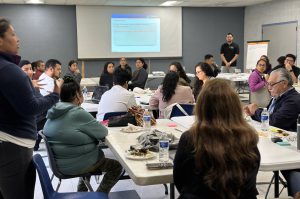
Advancing a Collaborative Agenda in Southeast LA
Advancing a Collaborative Agenda in Southeast LA In 2022, the California Community Foundation (CCF) launched the Regional Recovery Hub to strengthen place-based coordination in Los Angeles County
Variable Definitions:
Total Population: The total number of people living in an area
Source:
American Community Survey (ACS), 5-year estimates, Table B01003
Years Available*:
2010 – 2023
*Note: Each year of available data shown above is a 5-year estimate, or an average of data collected over a five year period. 5-year estimates are used to increase the reliability of the data at small geographies like neighborhoods and census tracts. The years shown on the NDSC map represent the final year of the five year average (e.g. “2010” represents 2006-2010 data, “2011” represents 2007-2011 data, and so on). For the most impactful comparison of data over time, the ACS recommends comparing non-overlapping years (e.g. 2010-14 with 2015-19).
Total Population
Measuring the total number of people in an area or neighborhood is useful by itself and as a complement to many other measures. Total population in a neighborhood shows that neighborhood’s population density, which can have implications for the health, housing and job availability, education quality, and local government tax revenue. Total population is also a vital tool for understanding how various indicators impact a group of people based on their population size, and the variable is used for many calculations throughout the NDSC data.

Advancing a Collaborative Agenda in Southeast LA In 2022, the California Community Foundation (CCF) launched the Regional Recovery Hub to strengthen place-based coordination in Los Angeles County

Every ten years, the federal government conducts a “census,” where it counts every person living in the United States. The constitution mandates that all people

Our nation’s population is aging and will continue to grow older over the next several decades. There are currently 49.2 million people ages 65 and
